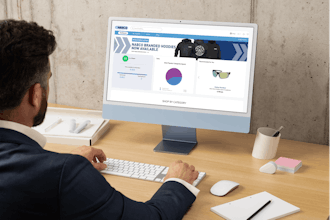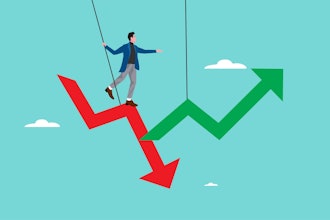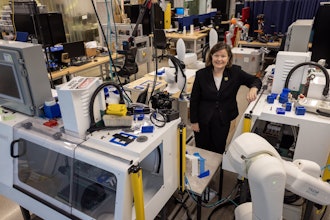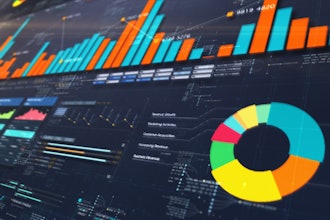With 90 percent of the world’s data created in the last two years, what can we expect our data vaults to hold two or even twenty years from now? Today we measure our lives in peta-bytes but by 2020 estimates show a 2,300 percent increase in the bits and bytes that will define our lives. 35 zeta-bytes to be exact. How then can we as a society leverage the intrinsic value of so much data without getting bogged down with its complexity?
Around the turn of the century, we experienced a similar moment of euphoria when retail outlets opened "virtual stores" and sold products to online buyers. A famous IBM TV ad once depicted an overwhelmed young company whose products went from a few online orders a day to hundreds of thousands. In many respects we have come full circle and are back at the starting gate of yet another era of unprecedented growth only this time instead of millions of orders, the focus is on zillions of data points.
In 2000 CEOs focused primarily on IT integration and supply chain strategies to fulfill a surge of orders. Their managers implemented the latest e-commerce packages, leveraged the cloud to reduce costs, broadened and compressed their global supply chains, and trained their workforce to adapt new work flows. Success was determined from a customer's positive experience, measured primarily by the number of accurate and timely deliveries.
Today, the paradigm has shifted away from a transaction-centric one to customer-centric. Companies no longer wait for customers to buy but instead develop sophisticated algorithms that can compare a specific customer’s purchase history with multiple data sets including credit rating reports, recent purchases, and most extraordinarily, their genuine propensity to buy based upon the web pages they most commonly visit. Surprisingly, web behavioral data has become a powerful data complement that can offer unprecedented efficiency benefits to both the merchant and the consumer. Customers receive compelling suggestions, while stores inventory the products their customers will most likely purchase. It's a win-win for both. Issues of privacy remain a sticking point for some individuals, but, as the benefits to the consumer improve, even these issues are expected to become less significant.
Striking the optimal balance will be tricky especially when the journey also involves flogging through mounds of unstructured web data. One approach being talked up within academic circles is systems thinking.
MIT’s SDM Conference - (sdm.mit.edu)
At a recent Systems Design Management (SDM) conference at MIT called “A Systems Approach to Big Data: Going Beyond the Numbers,” Senior Lecturer J. Bradley Morrison greeted a packed audience with a refresher on Systems Dynamics; the study of how all the various components within a company (people, materials, contracts, etc), for example, interact and react together to create a product or service. Morrison's "Back to the Classroom" exercise offered new insights on how the principles of "systems thinking" that today help companies scale their global operations can also be applied to leverage the new era of big data. His explanation is also testimony to the incredible versatility of "systems thinking" and systems design management principles.
Morrison divided "systems thinking" into various key areas. First off was 'dynamic complexity', which evaluates reactions when a smooth-running assembly line becomes inadvertently interrupted; for example, when a supplier's product fails and an alternative source is unavailable. According to Morrison, unexpected manufacturing events can also have a direct affect on a company’s moral and effectiveness. The reverse is also true where systems that operate smoothly can greatly improve on what Morrison refers to as the 'Mental Model'.
Another key area is "stocks and flows," which Morrison dubbed humorously as "bathtub dynamics." Similar to balancing the water level in a bathtub with running water, systems thinking can help calibrate inflows (i.e. inventory-build up) versus outflows (i.e. sales). The depth of the bathtub is determined by a company’s internal competitive advantage. These advantages vary widely but with regards to the alignment of systems thinking with big data, Morrison focused on skills training as a key differentiator. He highlighted his points with a case study from a U.S. motorcycle manufacturer, Harley-Davidson.
A Harley-Davidson case study
In the late '90s, Harley-Davidson implemented lean manufacturing systems throughout its operations. Management leveraged their strong union relations to encourage employee input. The response was overwhelming. After numerous meetings, participating employees elected to improve the rotor area on the shop floor. Soon new signs went up. Space allocation was optimized, and the new employee-driven initiative became a reality. Management was pleased with their progress. The improvements paid off with an increase in productivity from 70 percent to 94 percent without the need for additional floor space. All in all the project reflected a success story until a common syndrome called "process degradation" set in.
Like an ambitious diet plan, the idea reached its goal only to become unsustainable thereafter. Unaddressed issues such as an understanding of who was responsible to maintain the new process wedged away the achievements. The collaborative efforts to engage and integrate the surrounding workforce were weak and gave way to a "do-it-yourself," "if-and-when-you-can" approach. Despite the obvious benefits, workers returned to their old habits inhibiting further progress.
Who was to blame — management, labor or both?
Improving productivity with limited resources is a common problem with every company. That is why CEOs leverage technology, timely intel, and training whenever and however possible. Of these three, Morrison points to training as the greatest challenge and the most commonly ignored. Even when training is available, the type of training that he recommends is not classroom-style but rather on-the-job training.
“Learning a new skill is one thing but learning how to replace one's old habits with a new skill is quite another,” Morrison explained. “Workers need the opportunity to 'change their own mental model' before the true benefits from increased productivity can be fully realized.”
According to Morrison, managers should give their workers the opportunity to learn a new system on their own terms, regardless if it requires allocating extra time during a shift or work day -- even as much as 50 percent more time. Unless workers are given a chance to appreciate the time saving benefits on a personal level, they will more than likely return to their old habits and simply ‘add-on’ the new changes rather than adopt them for their intended benefits.
Looking ahead...
In the next few years, new skills training will involve some form of data analytics integration. As data sources swell in every part of a business, relying on a specialized team to manage the company's data needs will become unsustainable, especially when experts tell us that big data and data analytics, done right, depend upon the seamless collaboration and exchange of data from every corner of the company. Visionary CEOs will require every employee to learn how to collect, disseminate, compare and use data from multiple sources. Soon-to-be, 'unsilo'ed' departments will depend upon each other in an entirely new manner, since the data they collect will determine the value and quality of data for the rest of the company.
Just how CEOs balance this data exchange while injecting behavioral changes among their ranks will become a number one priority for years to come. ...and yet will CEOs have the foresight to allow their employees to experiment with best practices on company time? As we learned from the Harley Davidson case, those leaders that do allow their employees to adopt new behavioral changes on their own terms will more than likely achieve measurable, sustainable advantages. On the other hand, those who follow the herd by, for example, hiring more data scientists to solve their data issues, may lose an unprecedented opportunity to transform their workforce. At this juncture CEOs would do better implementing a systems thinking approach today that will allow every employee to eventually become a specialized big data provider/user for the company.
This article was first published here, and is reprinted with permission from the author.
Mr. Kadala is an internationally recognized writer, speaker, and facilitator on topics that concern CEO’s and political leaders. He is well-versed in economics, engineering, technology, finance, and marketing. His views are regularly published by prominent industry publications and also distributed to an exclusive list of contacts, some of whom he has met personally during his 20+ year tenure as the founder & CEO of Alternative Technology Corporation (ATC, Inc.).
For more details on his BMI process or his blog, please visit www.ResearchPAYS.net and www.TomKadala.com.






















